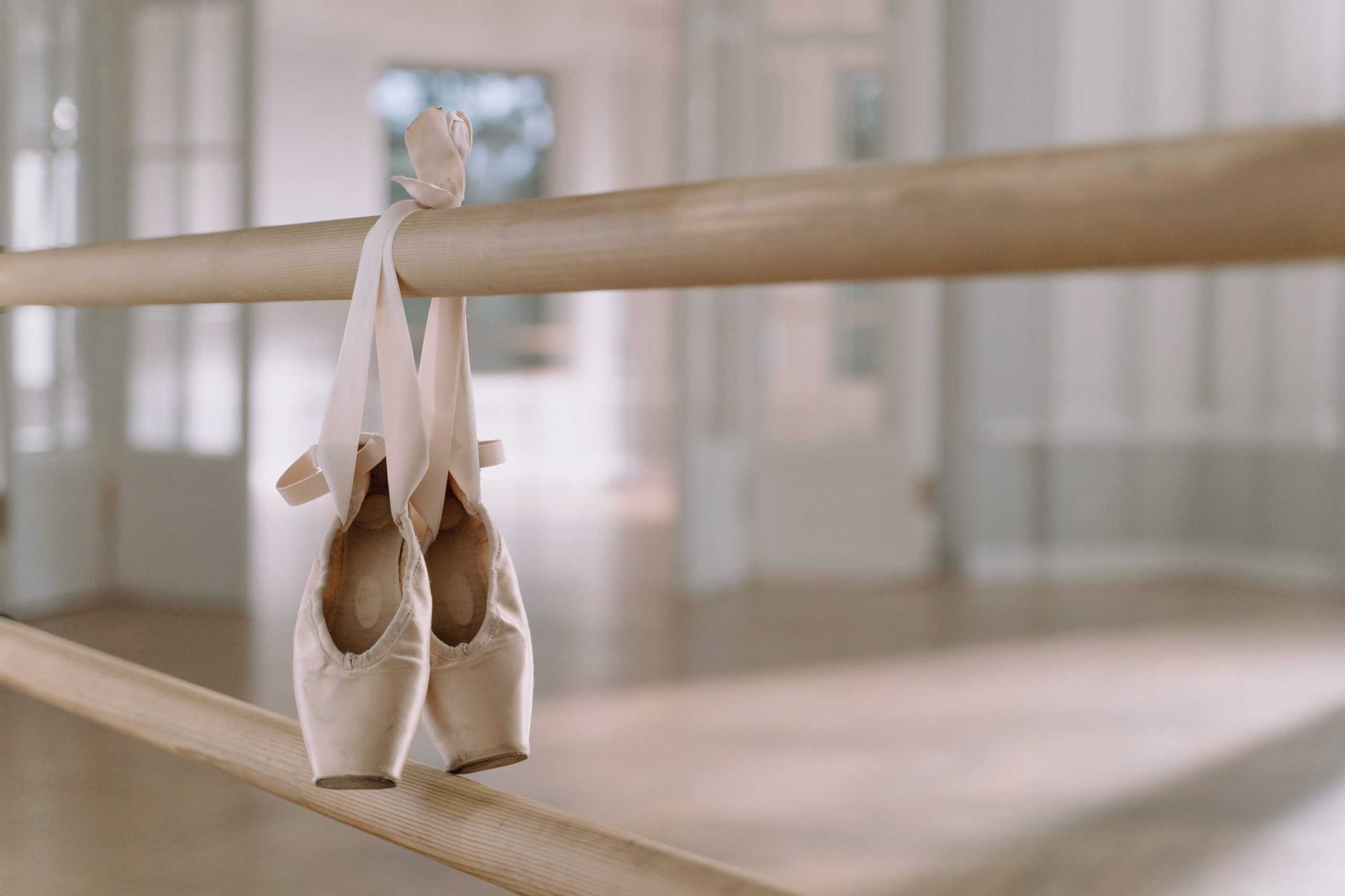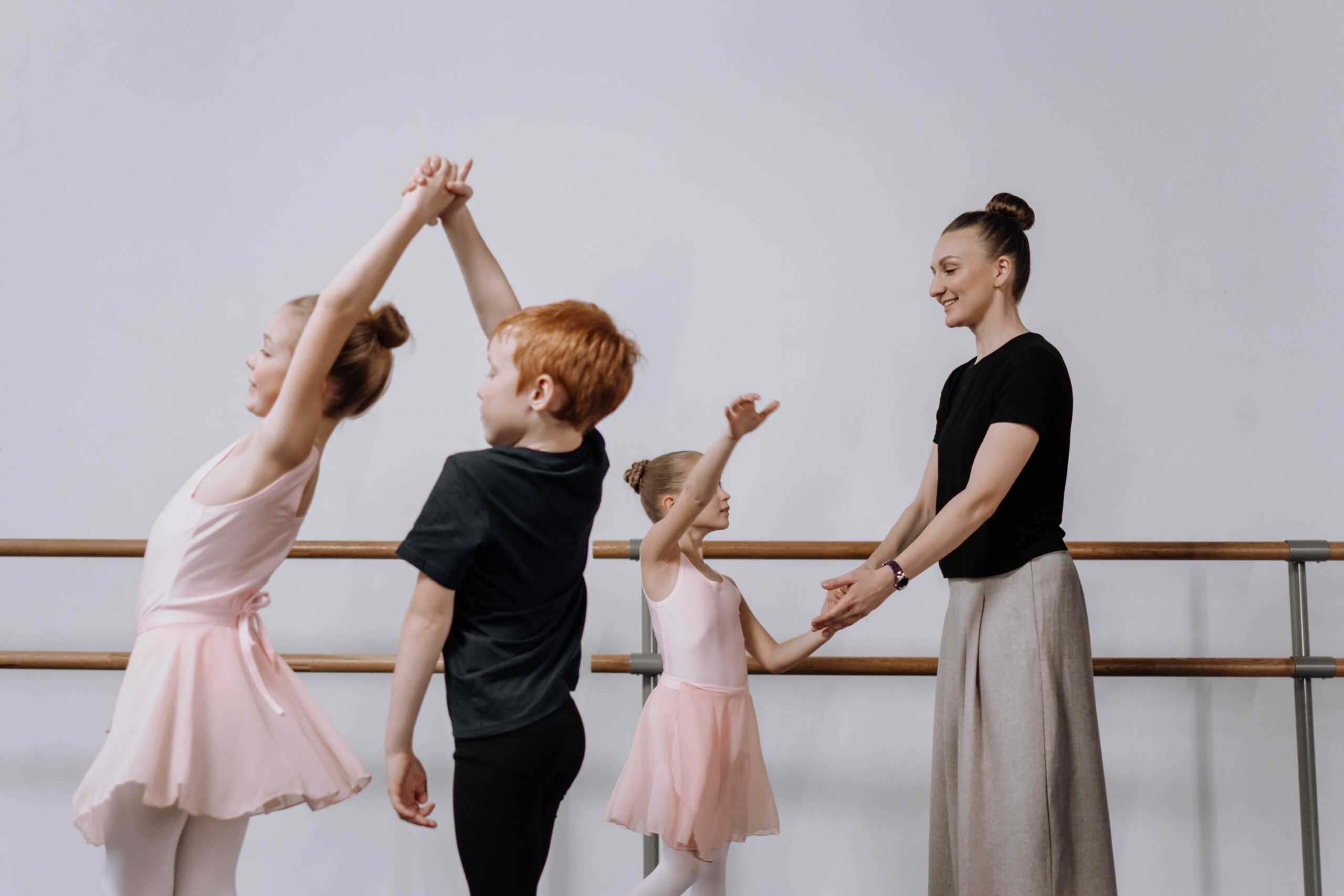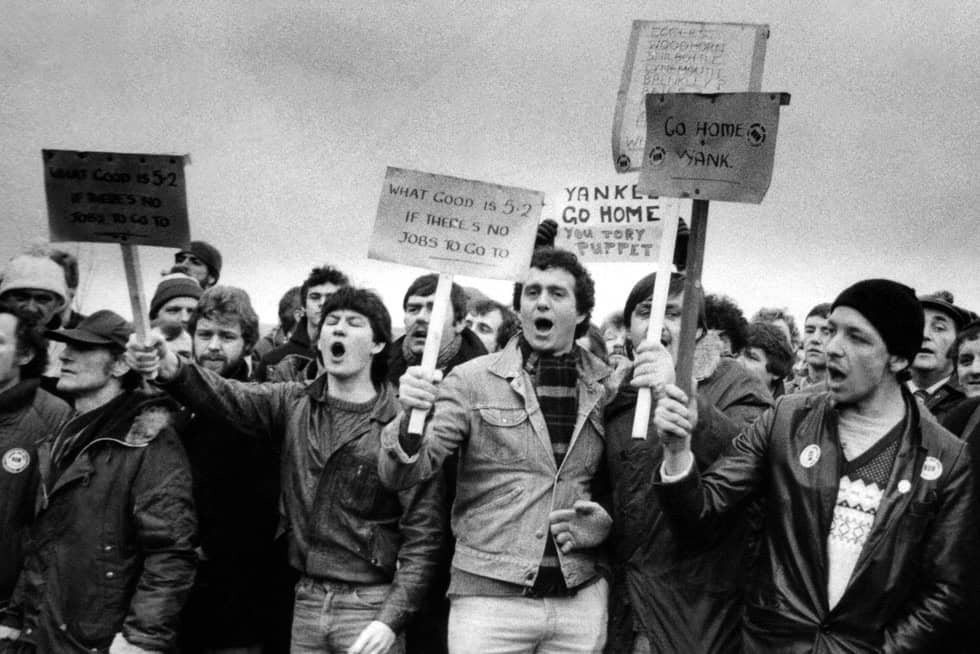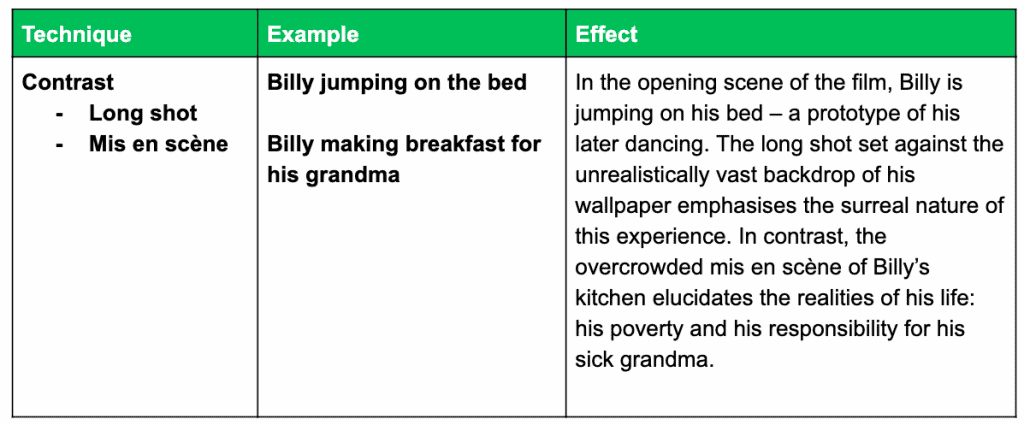Stephen Daldry’s 2000 film, Billy Elliot, follows a young boy living in Northern England who pursues his passion for ballet amidst societal expectations. We’ve compiled our Billy Elliot analysis here, with a summary, context, key themes, TEE tables, and a Band 6 exemplar response!
Studying this text for the HSC English Common Module right now? We’ve got you covered.
It’s time to ace your analysis of Billy Elliot — let’s go!
Plot Summary of Billy Elliot
Historical Context
Key Themes in Billy Elliot
Connection to Texts and Human Experiences
Writing Billy Elliot HSC Analysis in 3 Steps
Sample Band 6 Paragraph and TEE Tables
Plot Summary of Billy Elliot
Billy Elliot is a film set in a mining town in northern England during the 1984-85 miners’ strike. The story revolves around eleven-year-old Billy Elliot, whose life takes an unexpected turn when he discovers a passion for ballet.
Billy stumbles into a boxing class one day, but instead finds himself captivated by the ballet lessons happening in the same building. Encouraged by his dance teacher, Mrs. Wilkinson, Billy starts taking secret ballet lessons, hiding it from his traditional and struggling family, especially his father and older brother, who are deeply involved in the ongoing miners’ strike.
Despite facing opposition and ridicule from his family and the community, Billy’s talent becomes evident as he pours his heart into dancing. Mrs. Wilkinson recognizes his potential and encourages him to audition for the prestigious Royal Ballet School in London. However, Billy’s father, Jackie, initially disapproves, associating ballet with a lack of masculinity.
As the strike intensifies and tensions rise within the town, Jackie and the other miners struggle against the government’s policies, while Billy faces his own internal conflict between his passion for ballet and his family’s expectations. Eventually, Jackie witnesses Billy’s talent firsthand and realizes the importance of supporting his son’s dreams, giving him his blessing to pursue ballet.
In an emotionally charged climax, Billy auditions for the Royal Ballet School, delivering a breathtaking performance that moves the audition panel. The film culminates with a poignant acceptance letter from the school, signifying Billy’s triumph over adversity and the beginning of a new chapter in his life.
Context of Billy Elliot
The story of Billy Elliot is set against the backdrop of the 1984 miners’ strike in England. In an attempt to boost the economy, Margaret Thatcher shut down a number of collieries and in response trade unions fought back, going on strike.
This meant that almost all coal miners from South Wales, Yorkshire, Scotland, North East England and Kent stopped working, and picketed to stop other coal miners from going to work.
Those who did still choose to work in the mines were known as “scabs.” The strike left many families very poor, as they had no income, which is the situation Billy’s family finds themselves in during the film. There was a long war between the trade unions and Margaret Thatcher, who did all she could to quell their power.
On the 3 March 1985 the NUM’s national executive voted 98-91 in favour of an organised return to work. It was a bitter failure for the Miners, and also for organised industrial action, which would come to suffer further during the Thatcher years.
Key Themes in Billy Elliot
1. Gender Expectations
The film highlights the clash between Billy’s love for dance, a traditionally feminine art form, and his family’s expectations of him conforming to masculine ideals, particularly his father’s insistence on boxing as a suitable activity.
Billy’s pursuit of ballet not only defies these gender stereotypes but also showcases the importance of breaking free from societal constraints to embrace individuality and personal fulfilment; this is arguably the most prominent of the themes in Billy Elliot.
Looking for quotes? Here are the Top 50 Billy Elliot Quotes for each theme.
2. Rebellion
Billy’s rebellion against the traditional gender roles and expectations imposed upon him by his mining town community reflects a deeper desire to follow his passion for ballet, a pursuit considered unconventional and unsuitable for boys in that environment.
Billy’s defiance against the rigid norms of his society not only highlights the struggle of an individual against prevailing conventions but also emphasises the power of rebellion in challenging established norms to pave the way for personal growth and authenticity.
3. Determination
Despite facing numerous obstacles (family expectations, societal stereotypes, and economic hardships), Billy remains resolute in pursuing his dream.
His determination is evident in his relentless practice, his defiance of societal norms, and his willingness to endure ridicule and criticism. Billy’s unwavering dedication showcases the resilience of the human spirit, emphasising the transformative power of determination in overcoming adversities.
4. The Power of Art
Billy’s discovery and pursuit of ballet serve as a testament to the profound impact of art on individual growth and self-expression. In a town entrenched in the turmoil of a miners’ strike, ballet becomes Billy’s refuge, a means of escape from the harsh realities surrounding him.
Through dance, Billy not only discovers his innate talent but also finds a channel to express his emotions, dreams, and inner turmoil. The film beautifully illustrates how art possesses the ability to empower individuals, offering solace and a sense of purpose in the midst of adversity.
5. Family
While the Elliot family grapples with the harsh realities of the miners’ strike, Billy’s unconventional pursuit of ballet, contrary to their working-class values, also creates tension. However, Billy’s father, Jackie, ultimately undergoes a transformative journey, realising the importance of supporting Billy’s dreams.
Their bond strengthens as Jackie learns to embrace and celebrate Billy’s talent, symbolising the power of acceptance and unconditional love within a family navigating societal expectations and personal aspirations.
Need to find a related text for Billy Elliot that works with the HSC Common Module rubric?
6. Loss
Billy grapples with the loss of his mother, whose absence leaves a significant emotional void in his life, the town’s miners face the loss of their livelihoods due to the ongoing strike, and societal expectations impose constraints on Billy’s pursuit of ballet, highlighting the loss of personal expression and freedom.
Whether it’s the loss of loved ones, opportunities, or personal freedoms, the film showcases the human potential for resilience in the face of adversity and the complexities of grief while striving for personal fulfilment
7. Poverty
Poverty is a pervasive another of the themes in Billy Elliot, deeply ingrained in the film’s struggling working-class community during the 1984-85 miners’ strike. Billy’s father and brother are deeply involved in this strike, fighting against job losses and wage cuts.
This backdrop of poverty creates conflict within the family, with Billy’s pursuit of ballet seen as an extravagance in the face of their dire circumstances.
The film sensitively showcases how poverty impacts aspirations and choices, illustrating the stark contrast between dreams and the harshness of reality in a community struggling to make ends meet.
Remember that when we are writing about ideas in a text, we always need to go beyond a mere theme. Instead of writing a paragraph about “Family”, you should make an argument.
Connection to Texts and Human Experiences
Link #1: Anomalies, paradoxes and inconsistencies in human behaviour and motivations.
Billy Elliot himself is an anomaly as he goes against social expectations by pursuing ballet. However, his struggle to realise his dream demonstrates human inconsistency.
Billy does not consistently defy social conventions; in one scene, he hesitates to embrace dance by openly — and hypocritically — asking a friend, “What boys do ballet?” and collectively referring to dancers as “Poofs!”
Jackie (Billy’s father), also reveals the inconsistencies and paradoxes of human behaviour. He initially gives everything up for the miners’ strike and punishes his son for his love of ballet. However, he ultimately breaks his strike to support Billy’s dream.
Link #2: Individual and collective human experiences.
In the film, Billy’s individual pursuit of dancing contrasts against the collective experience of strict gender roles and toxic masculinity.
It is also useful to consider how Billy’s individual experience of rebelling against his society is somewhat similar to the collective experience of the strike rebellion. Perhaps these similarities are what allow Billy and his society to understand each other at the end of the film.
Writing Billy Elliot HSC Analysis in 3 Steps
Before we start writing analysis, we need to look at our two rules.
The first rule is “link the technique to the idea.”
This means when you are doing your analysis, you are not merely labelling a technique, but you are showing how its effect is relevant to your overall idea. It is more important that you link your technique to the idea, than linking the quote to the idea!
The second rule is “say something new!”
Weak essays often tend to repeat the exact same idea three times within a paragraph. To achieve a Band 6, you should make sure each point says something new and builds up an argument, rather than just repeating the previous point.
Before we get into our analysis, we need an idea, so we have something to link our techniques to! Our idea is: Despite being set in a society which stifles artistic pursuits, Billy Elliot suggests that art has the power to liberate individuals.
Step 1: Choose your example(s)
For our first Billy Elliot example for our analysis, we’ve chosen to compare two moments from the beginning of the film.
Firstly, the moment when Billy is jumping on his bed, and secondly, the moment when Billy is making breakfast for his grandma in the kitchen.
Remember that comparison between multiple moments in your text provides a great opportunity to do some deep analysis of your text.
Step 2: Identify techniques(s)
For these examples, we are going to use the technique of contrast.
The great thing about using contrast as a technique, is it means we can use 3 techniques in one piece of analysis as there is an extra technique on each side of the contrast.
For our examples we have a long shot for the first part of the contrast and Mis en scène for the second part of the contrast.
Step 3: Carry out your analysis
Remember that it’s all about linking to a specific question and making sure to analyse techniques, not the examples. We have written:
In the opening scene of the film, Billy is jumping on his bed — a prototype of his later dancing. The long shot set against the unrealistically vast backdrop of his wallpaper emphasises the surreal nature of this experience. In contrast, the overcrowded mis en scène of Billy’s kitchen elucidates the realities of his life: his poverty and his responsibility for his sick grandma.
Step 4: Organise your analysis
The way we recommend organising your analysis is through a TEE table. The TEE in TEE table stands for Technique, Example and Effect.
They’re a great tool you can use to analyse your text. All you have to do is include your pieces of evidence under ‘example’ then identify the technique in the ‘technique’ column and carry out your analysis like below:
If you’re analysing a few themes, it’s a good idea to have a separate TEE table per theme. For your Billy Elliot analysis for example, keep all pieces of evidence that relate to family in one table.
Want more examples of how to use a TEE Table to write really, really good HSC essays?
Sample Band 6 Paragraph and TEE Tables
We’ve analysed another two examples using TEE tables that relate to the theme of individuality and a sample Band 6 paragraph that you can access below!
Looking for some extra help with HSC English for your Billy Elliot analysis?
We have an incredible team of HSC English tutors and mentors who are new HSC syllabus experts!
We can help you master your HSC English text and ace your upcoming HSC English assessments with personalised lessons conducted one-on-one in your home or at our state of the art campus in Hornsby!
We’ve supported over 5,000 students over the last 10 years, and on average our students score mark improvements of over 19%!
To find out more and get started with an inspirational HSC English tutor and mentor, get in touch today or give us a ring on 1300 267 888!
Brooklyn Arnot has a Bachelor of Arts majoring in English Literature with Honours at the University of Sydney. She scored an HD average and has even received the Dean’s award for excellence! Brooklyn teaches our English classes at Art of Smart and has over 5 years of experience supporting Year 11 and 12 students throughout their HSC. She’s also a new Syllabus expert and studied 4U English in high school.






